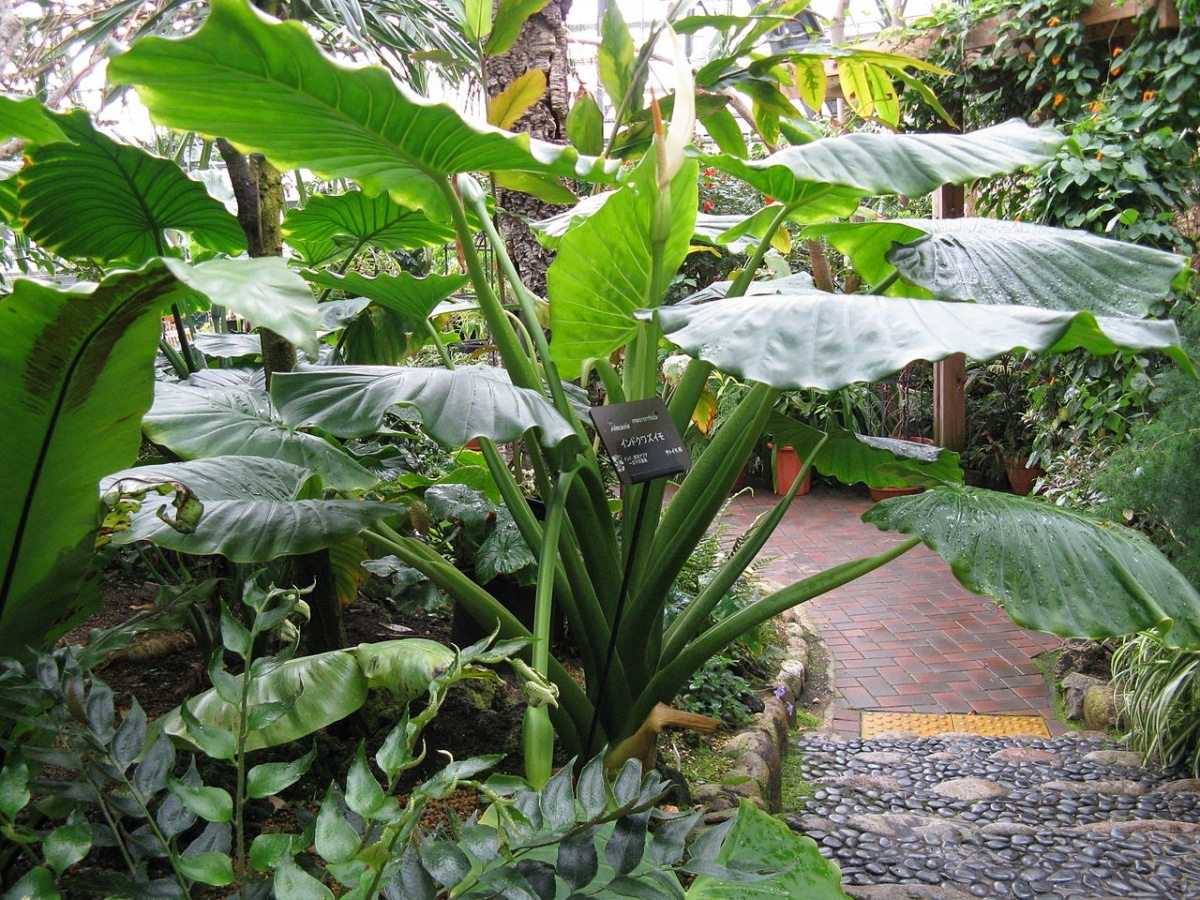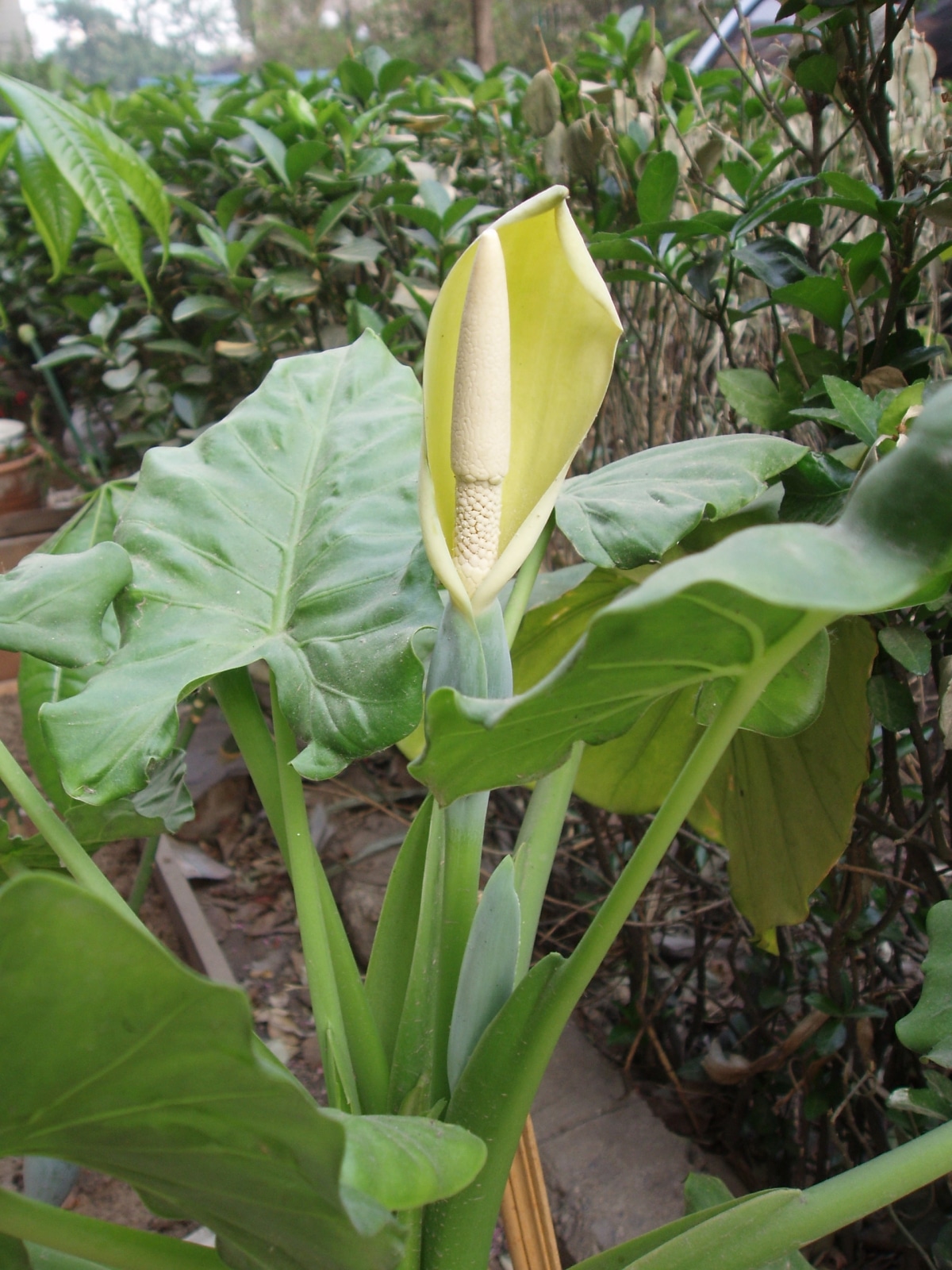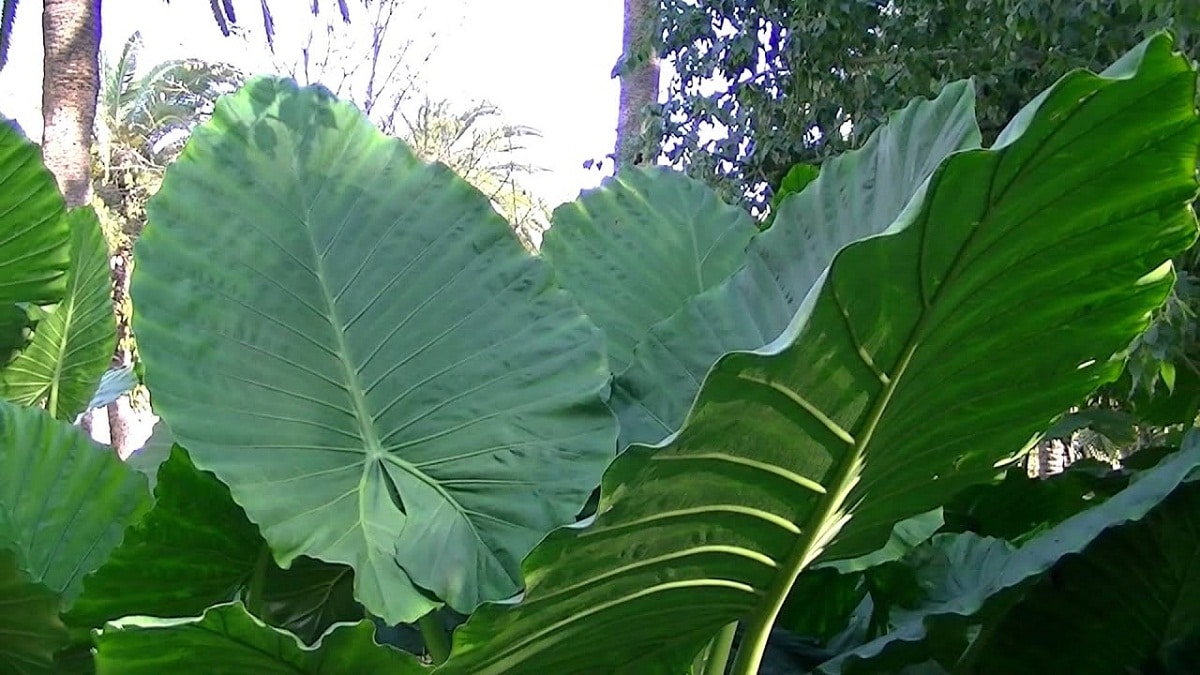
Image - Wikimedia / KENPEI
Elephant ear is a plant that has large leaves, which is why it is one of the most popular both indoors and outdoors. Its growth rate is quite fast, since it produces several new leaves a year and, in addition, it is getting taller and wider thanks to its long petioles that lean a little to one side.
However If there is something that is not often seen, it is the flower of the elephant ear. Moreover, it may be the case that someone believes that it does not produce flowers, and they would not be lacking for reasons: it takes years to produce them, and not only that, but also when it is being grown indoors and/or in a pot, it costs plus.
What flower gives the elephant ear?

Image - Wikimedia / Fanghong
The elephant ear, also called marquise or giant taro, it is a perennial herbaceous plant It belongs to the botanical family Araceae. Its natural habitat is found in the rain forests of Southeast Asia, which is why in cultivation it is recommended to water it continuously and to spray its leaves with water daily if the air humidity is low.
And it is that if we want to see its flower, we will have to avoid being thirsty and cold. In fact, we will only see her flourish if she is in good health, and for that we do not have to neglect watering, nor leave it outside without protection if temperatures drop below -5ºC.
The flower of our protagonist sprouts if the specimen is adult, that is, if it is at least 1 meters tall and develops large leaves, 50-70 centimeters long. That is why, when we have just bought one, we will have to wait a few years to see it bloom, since adult plants are not normally put up for sale (I have not seen any, and I have been going to nurseries from time to time since 2006). ).
If we talk about its characteristics, you have to know that it is a spadix inflorescence. It looks quite similar to the one that the coves have (Zantedeschia ethiopica), it is even also white. When fully grown, it is approximately 10 centimeters tall by 4 centimeters wide, and gives off a delicious aroma.
When does elephant ear bloom?
It is a plant that blooms throughout the summer. It likes the heat very much, so it will prosper very well in those places where the winters are mild or warm, as it will cost very little to resume its growth in spring, and therefore, it will start the year with more energy. An energy that, when the time comes, will be used to produce flowers.
But beware: this does not mean that it cannot flourish in temperate climates. What happens is that it is more difficult to do it. The climate is of great importance for plants, for all of them, and when they do not have the one that most closely resembles the one in their place of origin, they may have problems adapting.
What to do with the elephant ear flower?
If our alocasia has bloomed, we may be wondering what we can do with the flower. Well, if that is your case, I recommend you do nothing; that is, leave it on the plant until it wilts. Once it's spoiled, cut it clean with scissors that you have previously cleaned.
Put on rubber gloves to prevent the sap from coming into contact with your skin. And it is that it contains calcium oxalate, which can cause at least irritation and redness. If it happens to you, you have to wash your hands with soap and water as soon as possible.
Why is my plant not blooming?

To finish, we are going to see the possible reasons that your elephant ear has not bloomed yet:
- he's still young: remember that it only blooms when it is around 1,5-2 meters tall. The bigger it is, the more likely it is to bloom soon.
- Lacks space: so that it can grow and flourish, it is important that, if it is kept in a pot, it is planted in a larger one every 3 or 4 years. If it is always left in the same one, we will find ourselves with an elephant ear that will soon stop putting out new leaves, as its roots will exhaust the soil and, consequently, they will run out of nutrients and without space. So if you haven't transplanted it for a long time, do it in spring or summer to one that measures about ten centimeters more in diameter and height, and fill it with substrate for green plants like this one from here.
- The weather is cold: as we have mentioned before, the elephant ear does not like the cold. Although he supports it, that slows down his growth a lot. Therefore, it thrives best in places where temperatures are high, warm, but not extreme. So if the temperature drops below 10 degrees Celsius in winter, we recommend keeping it indoors to get it to flower as soon as possible.
Getting the elephant ear to bloom will take time, but you will surely succeed in the end.